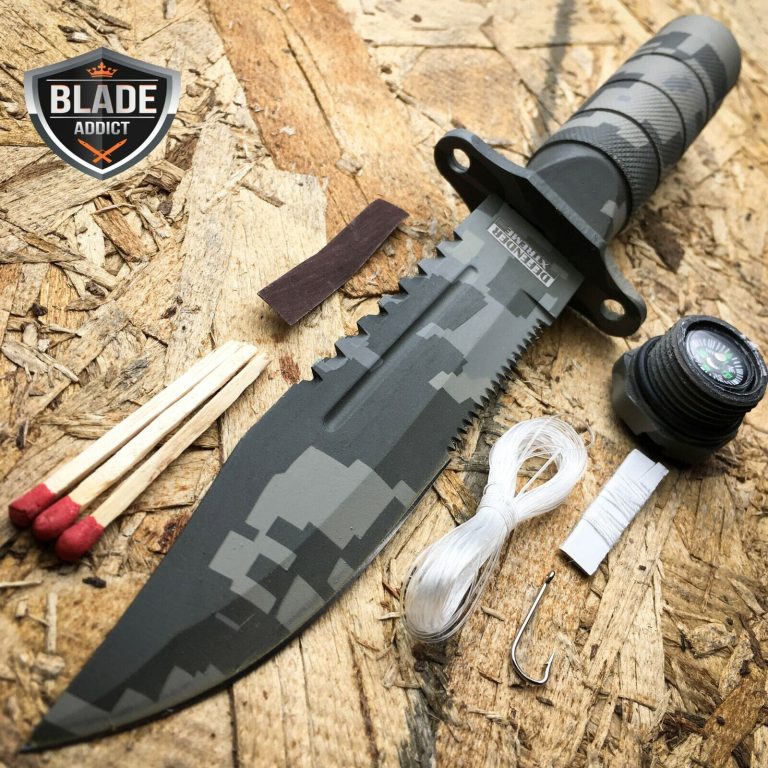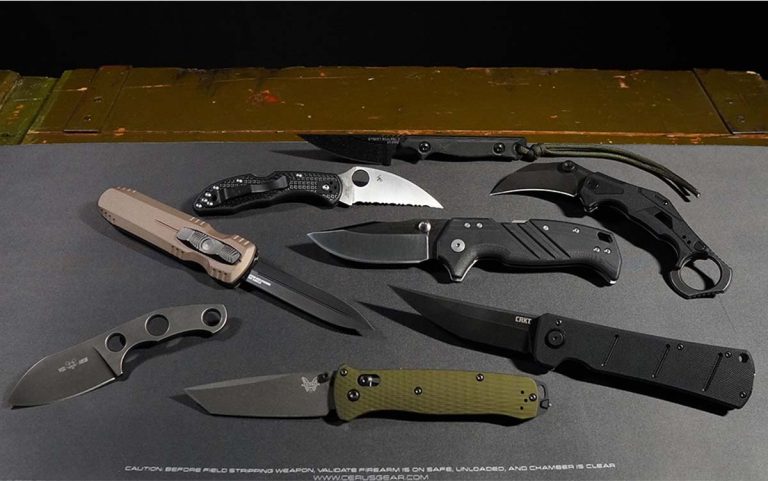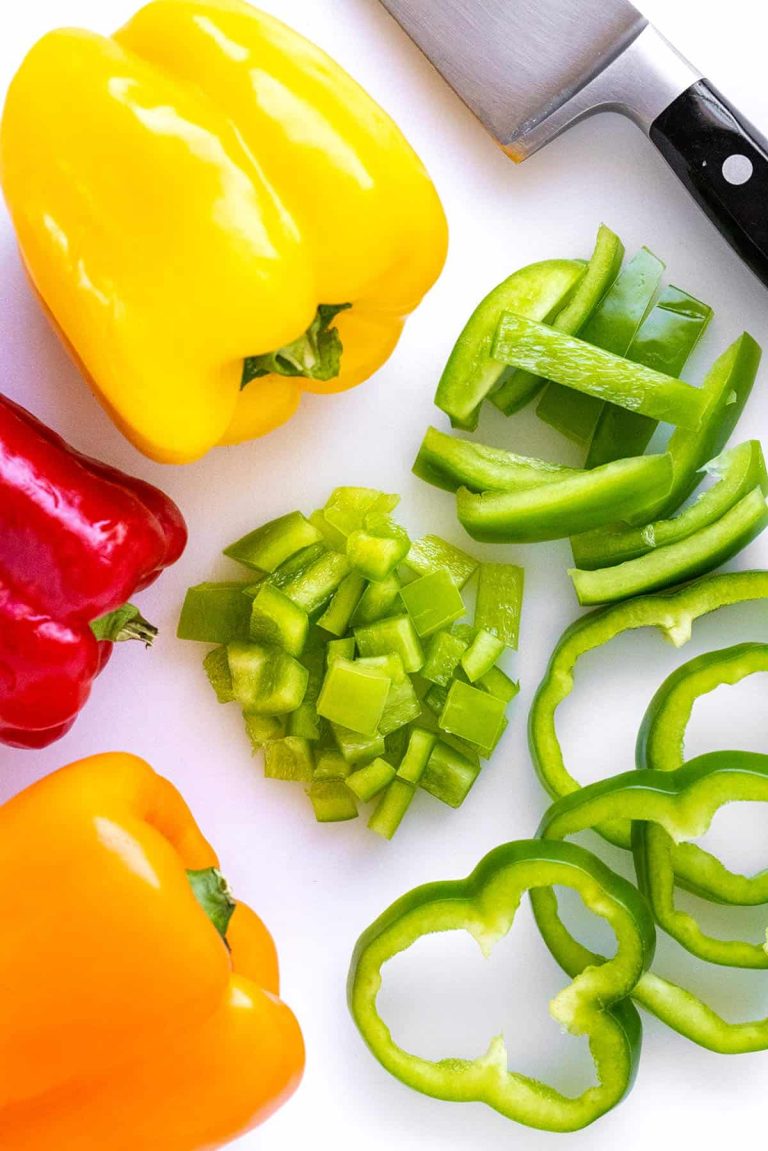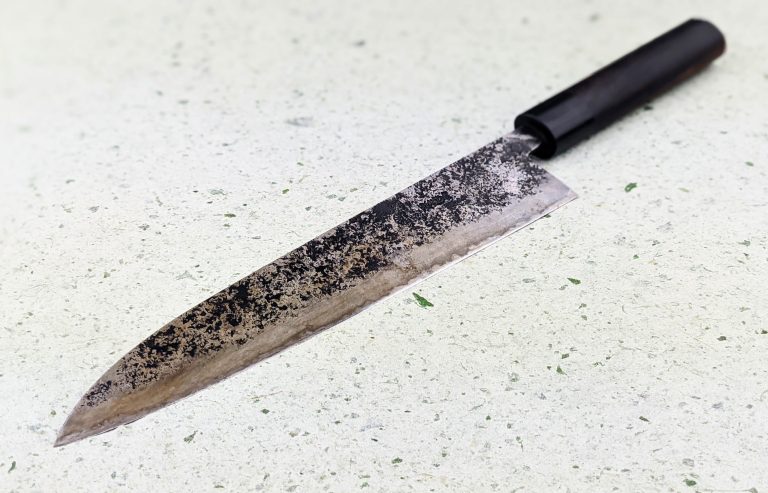Skinning Knives Vs. Gut Hook Knives: Pros And Cons
Skinning knives and gut hook knives have their own pros and cons, with the former offering versatility for all-purpose tasks and the latter providing ease in field dressing and skinning game animals, making it a matter of personal preference and specific hunting needs. We will delve into the advantages and disadvantages of both types of knives, highlighting their features, functionality, and suitability for different hunting situations.
By examining the pros and cons of skinning knives and gut hook knives, you can make an informed decision about which one best suits your hunting style and requirements. So, let’s explore the world of skinning knives and gut hook knives and choose the right tool for your hunting adventures.
Understanding The Difference
Skinning knives and gut hook knives each have their own pros and cons. Skinning knives are versatile and ideal for removing hides, while gut hook knives excel at field dressing and opening the abdomen without risking damage to the internal organs.
Skinning Knives: A Versatile Tool
Skinning knives are an essential tool for hunters and outdoor enthusiasts. These knives offer a wide range of applications and are designed to efficiently remove the hide from an animal’s body. Here are some key points to understand about skinning knives:
- Sharp, Curved Blade: Skinners feature a sharp, curved blade, allowing for precise and efficient skinning. The curved shape facilitates smooth, controlled cuts, minimizing the risk of accidentally puncturing organs or damaging the meat.
- Versatile Design: Skinning knives are versatile tools that can be used for various tasks beyond skinning. They are suitable for tasks such as field dressing, caping, and butchering. This versatility makes them a popular choice among hunters.
- Ergonomic Handle: Skinning knives typically have an ergonomic handle that offers a comfortable grip, ensuring a secure hold even in wet or slippery conditions. This design helps to enhance control and reduce fatigue during extended use.
- Different Blade Lengths: Skinners come in various blade lengths, allowing users to choose the most appropriate size for their intended use. Shorter blades are ideal for smaller game or intricate work, while longer blades are better suited for larger animals.
- Maintenance: Proper maintenance of skinning knives is crucial to ensure their longevity and performance. Regular cleaning, drying, and oiling of the blade help prevent rust and maintain sharpness.
Gut Hook Knives: Specialized For Field Dressing
Gut hook knives are specialized tools primarily used in field dressing, specifically for opening the abdomen of an animal to remove the entrails. Here’s what you need to know about gut hook knives:
- Unique Blade Design: Gut hook knives feature a ‘gut hook’ or ‘skinning hook’ on the spine of the blade, near the tip. This sharp, curved hook is designed to make a precise incision without piercing internal organs or damaging the meat.
- Efficient Gutting: The gut hook serves the purpose of making a clean cut, saving time and effort during field dressing. It allows hunters to open the abdomen quickly and carefully, minimizing the risk of contamination from the animal’s internal cavity.
- Specialty Tool: While gut hook knives excel at field dressing, their narrow focus limits their versatility compared to skinning knives. They may not be as effective for other tasks such as caping or butchering.
- Consider Blade Length: Like skinning knives, gut hook knives come in different blade lengths. Shorter blades are suitable for small to medium-sized game, while longer blades cater to larger animals.
- Maintenance: Proper care and maintenance are essential for gut hook knives to ensure their longevity and functionality. Regularly cleaning the blade, removing any tissue or blood, and ensuring it remains sharp will optimize performance.
Understanding the difference between skinning knives and gut hook knives is crucial when selecting the right tool for your hunting or outdoor needs. Whether you require the versatility of a skinning knife or the specialized precision of a gut hook knife, each serves a specific purpose in the field.
Ultimately, your choice will depend on your preferred hunting style, target game, and individual preferences.
Pros Of Skinning Knives
Skinning knives offer precise and efficient skinning, while gut hook knives provide easy access to the internal organs. Skinning knives are versatile and offer a cleaner, more controlled cut, making them a popular choice among hunters and butchers.
Versatility For Different Tasks
Skinning knives offer a range of advantages that make them an excellent choice for various tasks. Here are the pros of using skinning knives:
- Adaptability: Skinning knives are versatile tools that can handle a variety of cutting tasks beyond just skinning animals. They can also be used for tasks such as deboning meat, filleting fish, and even slicing vegetables. With a skinning knife in hand, you have a tool that can tackle multiple kitchen and outdoor tasks efficiently.
- Precision: Skinning knives are designed to make precise cuts, allowing you to remove the hide of an animal with ease and accuracy. The sharp, narrow blade of a skinning knife gives you the control needed to navigate around tight spaces and delicate areas, ensuring minimal damage to the meat or hide.
- Maneuverability: The lightweight and ergonomic design of skinning knives allow for easy maneuverability. Whether you’re working in a tight space or need to make intricate cuts, the compact size and well-balanced nature of skinning knives make them highly maneuverable tools.
- Versatile Blade Shapes: Skinners come in various blade shapes, including drop point, clip point, and trailing point. Each of these blade shapes offers different advantages, making it easier to choose one that suits your specific task. For example, a drop point blade is great for general-purpose skinning, while a trailing point blade is ideal for precision work.
Ability To Make Precise Cuts
The ability to make precise cuts is a major advantage of using skinning knives. Here’s why:
- Sharpness: Skinning knives are known for their exceptional sharpness. The razor-sharp edge allows for clean and precise cuts, minimizing the risk of tearing or damaging the meat or hide. With a sharp skinning knife, you can achieve smooth and precise cuts effortlessly.
- Pointed Tip: Skinning knives typically have a pointed tip, which offers excellent control when navigating through tight areas. Whether you’re working around joints, offal, or delicate tissues, the pointed tip allows for precise and controlled movements, ensuring clean and accurate cuts.
- Single Bevel Blade: Many skinning knives feature a single bevel blade, which further enhances precision. The single bevel design provides a consistent cutting angle, allowing for more accurate and controlled cuts. This makes skinning knives particularly well-suited for intricate tasks like caping or preparing small game.
Ease Of Sharpening And Maintenance
Keeping your tools sharp and well-maintained is essential for optimal performance. Skinners offer several advantages in terms of sharpening and maintenance:
- Quick Sharpening: Skinning knives are relatively easy to sharpen due to their robust blade design. The thin, flat grind on the cutting edge makes it easier to reach and restore the sharpness. With minimal effort, you can have your skinning knife back to its optimal cutting performance.
- Simple Blade Maintenance: Skinners typically do not have complex mechanisms or features that require extensive maintenance. With proper cleaning and occasional oiling to prevent rust, skinning knives can be kept in excellent condition with minimal effort.
- Durable Materials: Skinning knives are commonly made from high-quality, durable materials such as stainless steel or carbon steel. These materials are known for their ability to retain sharpness and withstand repeated use. Choosing a well-made skinning knife ensures longevity and reduces the frequency of sharpening and maintenance required.
Skinning knives offer versatility for different tasks, the ability to make precise cuts, and ease of sharpening and maintenance. These advantages make skinning knives an indispensable tool for hunters, outdoor enthusiasts, and anyone who requires a reliable cutting instrument.
Cons Of Skinning Knives
Skinning knives have some drawbacks compared to gut hook knives. They require more skill and precision to use, and may not be as effective or efficient in certain situations. Nevertheless, skinner knives offer versatility and can be used for various tasks beyond just skinning.
Skinning knives are a popular choice among hunters for their efficiency and ease of use. However, like any tool, they have their drawbacks. In this section, we will explore the cons of using skinning knives for gutting and field dressing game.
Limited Effectiveness For Gutting:
- Skinning knives are primarily designed for removing the hide or skin of an animal. Therefore, they may not be the most effective option when it comes to the delicate task of gutting.
- The lack of a specialized gut hook or curved blade can make it challenging to cleanly open the animal’s abdomen without slicing into internal organs.
- This limited effectiveness for gutting can result in a messier, more time-consuming process, potentially affecting the quality of the meat and overall efficiency.
Potential Damage To Internal Organs:
- One significant drawback of using skinning knives for gutting is the risk of unintentional damage to internal organs. The sharp, pointed tip of a skinning knife may inadvertently puncture or nick vital organs, spoiling the meat and even rendering it inedible.
- Inexperienced or hurried hunters may be more prone to accidents, particularly if they are not accustomed to the specific anatomy of different game animals.
- Minimizing the risk of organ damage is crucial to maintain the quality of the meat and ensure the ethical treatment of the animal.
Lack Of Specialized Features For Field Dressing:
- Skinning knives are primarily designed for removing the hide and may lack the specialized features necessary for efficient field dressing.
- Unlike gut hook knives, which come equipped with a dedicated hook-shaped blade specifically for splitting the sternum and pelvic bone, skinning knives may struggle with these tasks.
- The absence of specialized features can make the job of field dressing more challenging and time-consuming, potentially impacting the quality of the meat if not properly executed.
While skinning knives are versatile tools for removing the hide or skin of game animals, they have some limitations when it comes to gutting and field dressing. The potential for limited effectiveness in gutting, the risk of damaging internal organs, and the lack of specialized features for field dressing are important factors to consider when choosing the appropriate knife for the task at hand.
Pros Of Gut Hook Knives
Gut hook knives offer the advantage of easy and efficient gutting while minimizing the risk of puncturing the internal organs. With their specialized design, they are ideal for hunters and outdoor enthusiasts looking for a precise and quick way to field dress game.
Efficient Gutting And Field Dressing
Gut hook knives come with several advantages when it comes to efficient gutting and field dressing. Here are some key points to consider:
- Quick Gutting: Gut hook knives are specifically designed to swiftly and effectively remove the internal organs of game animals. The hook-shaped blade allows for a clean incision that can easily navigate through tough areas.
- Easy Field Dressing: Gut hook knives make field dressing a simpler task. With their curved and sharp blades, they allow hunters to effortlessly open up the animal’s abdominal cavity. This enables the removal of organs, such as the intestines, without risking damage to the meat.
- Precision Cutting: The gut hook feature on these knives allows hunters to make precise cuts. It gives them better control over the depth of their incisions, minimizing the risk of accidentally nicking vital organs.
- Versatility: Gut hook knives are not limited to just gutting and field dressing. They can also be used for a variety of other tasks, such as cutting through tough materials like rope or opening packages while out in the field.
- Time-saving: With gut hook knives, the gutting and field dressing process can be significantly expedited. The specialized design allows for efficient and streamlined work, helping hunters save time in the field.
Gut hook knives offer numerous benefits when it comes to efficient gutting and field dressing. Their quick gutting capabilities, ease of field dressing, precision cutting, versatility, and time-saving nature make them valuable tools for hunters.
Cons Of Gut Hook Knives
Gut hook knives have their drawbacks compared to skinning knives, such as making precise cuts and limited versatility. However, they can be useful for quickly opening game and are favored by some hunters for their ease of use.
Limited Application Beyond Field Dressing
Gut hook knives may have a limited application beyond field dressing. Here are some points to consider:
- Limited versatility: Gut hook knives are primarily designed for gutting and skinning animals, making them less versatile compared to skinning knives. They are not ideal for tasks such as slicing, dicing, or carving meat.
- Specific to hunting: Gut hook knives are specifically designed for hunting purposes. If you are not an avid hunter or do not engage in field dressing frequently, investing in a gut hook knife may not be necessary.
- Less practical for everyday use: Due to their specialized design, gut hook knives may not be the best choice for everyday use in the kitchen or other general purposes. Their sharp hook can easily damage or snag other objects or materials.
Difficulty In Sharpening And Maintenance
When it comes to sharpening and maintenance, gut hook knives pose some challenges. Consider the following:
- Complex sharpening process: Properly sharpening a gut hook knife can be a complex task. The curved nature of the blade, combined with the hook, makes it difficult to achieve consistent sharpening across the entire edge.
- Specialized tools required: Sharpening a gut hook knife requires specific tools, such as a sharpening rod or hone with a hook-shaped groove. These tools might not be readily available in every household or easily accessible for beginners.
- Regular maintenance needs: Gut hook knives may require more frequent maintenance compared to other types of knives. The intricate design of the hook can trap debris, blood, and other residue during field dressing, making it necessary to clean and maintain the knife regularly.
To summarize, gut hook knives have limitations beyond field dressing tasks, and their unique design presents challenges when it comes to sharpening and maintenance. Considering these cons will help you make an informed decision when choosing between gut hook knives and skinning knives.
Factors To Consider When Choosing
Choosing between skinning knives and gut hook knives requires considering their pros and cons. Skinners offer precision and versatility, while gut hooks simplify field dressing. Make an informed decision based on your specific needs and hunting style.
Task Specificity
- Skinning knives: Designed specifically for removing the hide from animals, these knives have a pointed, narrow blade that excels in precision and control. They are ideal for tasks like skinning game animals or preparing hides for taxidermy.
- Gut hook knives: Equipped with a curved, sharpened hook on the spine of the blade, gut hook knives are primarily used for field dressing and gutting game animals. The hook enables easy opening of the abdominal cavity while minimizing the risk of puncturing organs.
Skill Level And Experience
- Skinning knives: Suitable for both beginners and experienced hunters, as they offer versatility in various techniques.
- Gut hook knives: Recommended for more experienced hunters who are familiar with the proper usage and technique for opening the abdominal cavity with a gut hook.
Personal Preference And Comfort
- Skinning knives:
- Offers a more traditional and versatile option for hunters who prefer the tactile experience of manually removing animal hides.
- Provides greater control for precise cuts, but requires more skill and practice.
- Ideal for those who enjoy the artistry and craftsmanship of skinning game animals.
- Ensures minimal damage to the hide, preserving its quality for further use such as tanning.
- Gut hook knives:
- Preferred by hunters who value speed and efficiency during field dressing and gutting processes.
- Reduces the risk of accidentally puncturing internal organs, making it an excellent choice for those who prioritize safety.
- Allows for faster and easier gutting, especially when dealing with large game animals.
- Offers convenience and ease of use for individuals who prefer a specialized tool for gutting tasks.
Remember, when choosing between skinning knives and gut hook knives, consider factors such as task specificity, your skill level and experience, as well as personal preference and comfort. Assessing these aspects will help you find the knife that best suits your needs and enhances your hunting experience.
Conclusion: Choosing The Right Knife
When deciding between skinning knives and gut hook knives, consider the pros and cons. Skinning knives offer versatility for different field tasks, while gut hook knives provide specialized ease for field dressing animals. Choose the one that best suits your needs.
When it comes to choosing the right knife for your outdoor adventures, you’ll likely come across two popular options: skinning knives and gut hook knives. Each knife serves a specific purpose, but which one is the best fit for you?
In this discussion, we’ll weigh the pros and cons of both types to help you make an informed decision.
Balancing Versatility And Specialization
- Skinning Knives:
- Versatile and multi-purpose tool for various tasks, including skinning, butchering, and general outdoor use.
- Sharp, fine-edged blade ideal for precision cutting and slicing through the hide without excessive damage.
- Efficient for both small and large game, offering control and precision.
- Can be sharpened to a razor edge for optimal performance.
- Requires a separate gutting tool or additional steps for gutting game.
- Gut Hook Knives:
- Specialized tool designed primarily for gutting game.
- Features a hook-shaped blade notch that allows for quick and clean opening of the animal’s abdominal cavity.
- Reduces the risk of puncturing internal organs during the gutting process.
- Simplifies the gutting process, making it faster and more efficient.
- Limited use for other tasks apart from gutting.
Considering Factors For Your Specific Needs
Choosing the right knife depends on various factors, such as the type of hunting you do and your personal preferences. Consider these factors before making your decision:
- Hunting Purpose:
- If you primarily focus on hunting small game or engage in a variety of outdoor activities, a skinning knife’s versatility may be more practical.
- For hunters primarily targeting big game and prioritizing efficiency in gutting, a gut hook knife may be the better choice.
- Skill Level and Experience:
- Skinning knives are generally more forgiving for novice hunters, as their design allows for a wider range of applications.
- Gut hook knives require practice to master the technique of effective and controlled gutting.
- Personal Preference:
- Some hunters simply prefer the traditional skinning knife due to familiarity or personal attachment.
- Others appreciate the specialized nature and time-saving capabilities of gut hook knives.
Now that you have a better understanding of the pros and cons of both skinning knives and gut hook knives, consider what matters most to you in terms of versatility, specialization, and personal preference. By evaluating these factors and considering your specific needs, you’ll be able to make an informed decision to choose the right knife for your outdoor adventures.
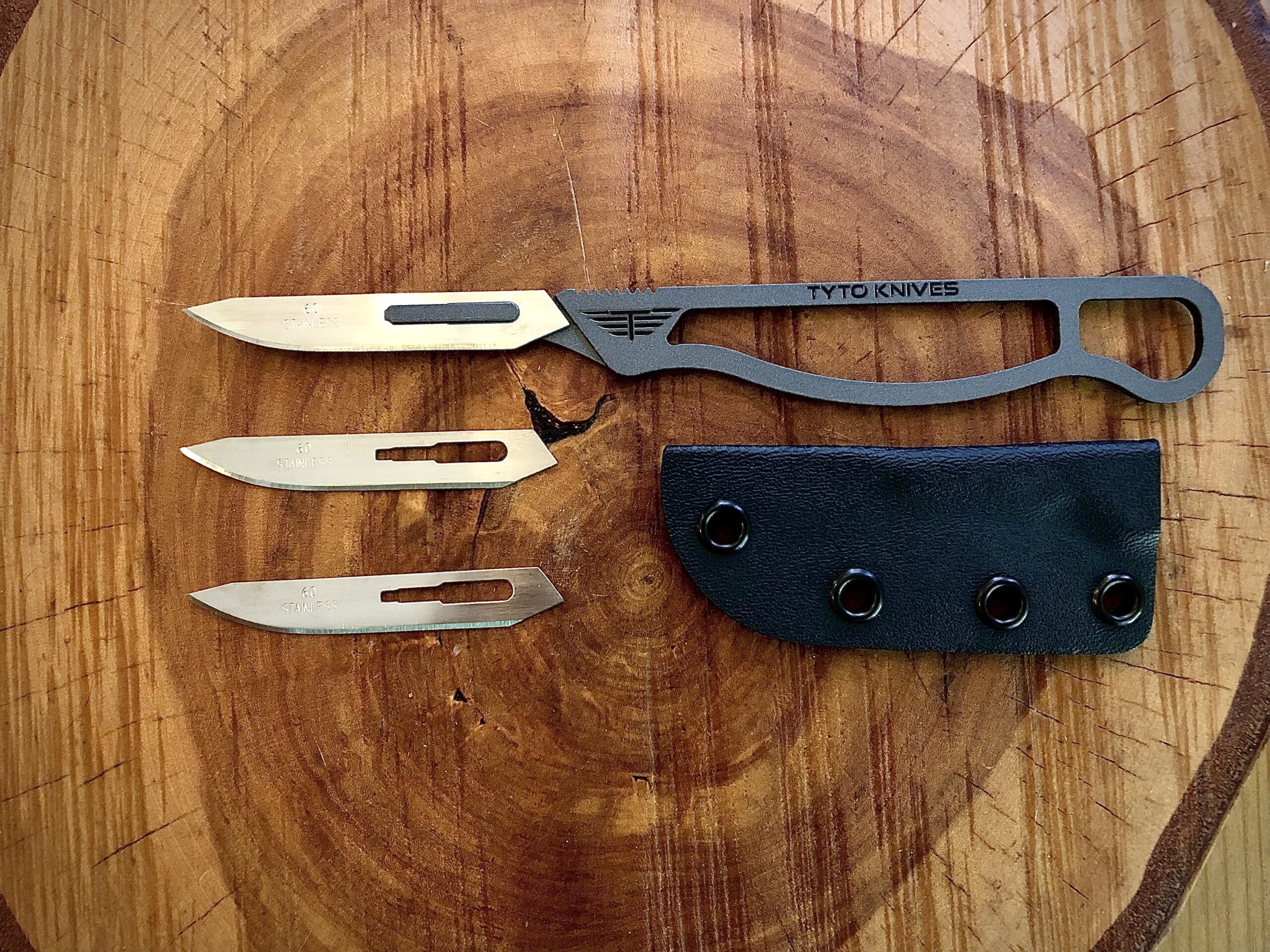
Credit: www.outdoorlife.com
Frequently Asked Questions For Skinning Knives Vs. Gut Hook Knives: Pros And Cons
Are Gut Hook Knives Worth It?
Yes, gut hook knives are worth it for precision cutting and field dressing game animals.
What Is The Best Knife For Gutting And Skinning Deer?
The best knife for gutting and skinning deer is one that has a sharp, curved blade.
What Is The Purpose Of A Gut Hook Knife?
A gut hook knife is used for easily and effectively cutting open the abdomen of an animal during field dressing.
What Is The Difference Between A Hunting Knife And A Skinning Knife?
A hunting knife is used for various outdoor tasks, while a skinning knife is specifically designed for skinning animals.
Conclusion
Both skinning knives and gut hook knives have their own pros and cons. Skinning knives excel in their versatility, allowing for a wide range of applications beyond just skinning. They offer greater control and precision, making them suitable for different types of cuts.
On the other hand, gut hook knives specialize in field dressing and are particularly useful for efficiently opening the abdominal cavity without damaging the internal organs. Their unique design reduces the risk of puncturing the innards, ensuring cleaner and more efficient gutting.
Ultimately, the choice between a skinning knife and a gut hook knife depends on personal preferences and intended use. Consider the type of game you frequently hunt, your level of experience, and the specific tasks you need to accomplish. By selecting the right tool for the job, you can optimize your hunting experience and ensure successful field dressing every time.

